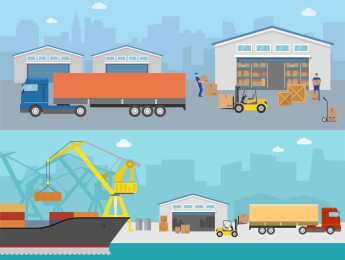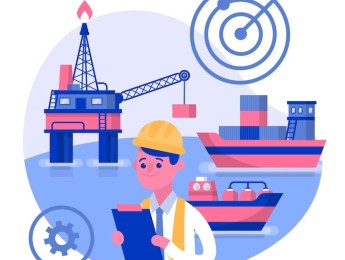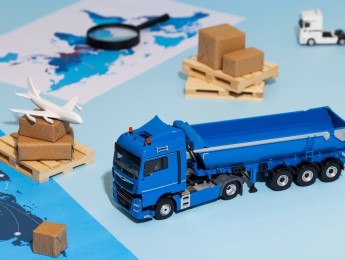Effective transportation is incredibly important for many organisations that rely on overseas trade and services. Offshore projects require heavy lifting. Heavy lifting can be a complicated process with many risks, so it is crucial for those involved to have an in-depth understanding of the processes and health and safety regulations.
To ensure a smooth transition from onshore to offshore functions, considerable knowledge of all the equipment involved needs to be obtained. A variety of vessels and cranes can be used for heavy lifting, and each comes with its own regulations and safety equipment. Preparation and planning are crucial for this stage, as this is where all factors and influences will be documented and adjustments made to ensure the project can continue smoothly.
Conducting risk assessments is absolutely essential for heavy lifting to take place. Identifying all risks and hazards associated with this process will allow those involved to establish preventatives and potential solutions for these risks, protecting all workers involved. When implementing risk management, there needs to be a thorough understanding of the health and safety regulations the project must adhere to.
Upon completion of this course, participants will be able to:
- Understand the importance of transportation and heavy lifting within offshore projects.
- Identify various types of equipment used for transportation and heavy lifting.
- Advise the use of various accessories and attachments used within these projects.
- Effectively create plans detailing processes and essential equipment required for a project.
- Conduct in-depth inspections of desired equipment to ensure maximum safety and that they are fit for purpose.
- Carry out risk assessments and implement risk management.
- Analyse health and safety regulations for offshore transportation and heavy lifting.
This course is designed for anyone involved in the processes of transportation and offshore heavy lifting. It would be most beneficial for:
- Project Engineers and Technicians
- Project Managers
- Heavy Crane Inspectors
- Health and Safety Officers
- Operations Managers
- Offshore Installation Engineers
- Lifting and Rigging Specialists
- Transportation Safety Supervisors
This course uses a variety of adult learning styles to aid full understanding and comprehension. Participants will review various heavy lifting plans to highlight key information that must be included, and to identify any areas of potential risk.
They will be able to participate in a range of learning activities, such as presentations, video materials, group discussions, and practical activities. These methods will ensure all participants have full opportunities to develop a comprehensive understanding of the taught content. They will be provided with all the necessary tools to take part in the activities effectively.
Day 5 of each course is reserved for a Q&A session, which may occur off-site. For 10-day courses, this also applies to day 10
Section 1: Introduction to Offshore Projects
- What may entail in an offshore project?
- The types of offshore equipment commonly used.
- Health and safety regulations must be followed at all times.
- The various types of vessels.
- Maritime contracts and conditions must be followed while offshore.
Section 2: Heavy Lifting Equipment
- Different types of lift vessels – heavy lift, offshore installation, and offshore support vessels.
- The purpose of different lift vessels, and how they each work to ensure a smooth transition.
- Safety equipment used for each type of crane, and how these prevent risks.
- The structures and types of vessel cranes.
- Effects of maritime conditions on the use of cranes.
- Economics of offshore lifting projects.
Section 3: Utilising Multi-Cranes
- Relevant standards and regulations of using cranes – ASTM, EN, ISO and BS.
- Factors influencing heavy lifting are load geometry, centre of gravity, supporting points and environmental conditions.
- Establishing detailed plans for heavy lifting operations, including factors such as crane model, position, size and weight of load and rigging
- Maintaining control of the lifting operation.
Section 4: Heavy Lifting and Shipping
- Key features of naval architecture.
- How to effectively assess environmental conditions.
- The operation, structures and application of different types of heavy lift ships – lo-lo and flo-flo.
- Preparing lift-on and lift-off plans.
- Conducting a motion analysis of vessels.
- The processes of loading, sailing, and discharging vessels.
Section 5: Health and Safety for Offshore Projects
- Raising health and safety awareness for all those involved.
- Identifying potential hazards utilising various methods such as HAZOP and LOPA.
- Establishing risk management for the project.
- Reporting major and minor incidents.
- Prioritising risks and implementing solutions and preventatives.
Upon successful completion of this training course, delegates will be awarded a Holistique Training Certificate of Completion. For those who attend and complete the online training course, a Holistique Training e-Certificate will be provided.
Holistique Training Certificates are accredited by the British Assessment Council (BAC) and The CPD Certification Service (CPD), and are certified under ISO 9001, ISO 21001, and ISO 29993 standards.
CPD credits for this course are granted by our Certificates and will be reflected on the Holistique Training Certificate of Completion. In accordance with the standards of The CPD Certification Service, one CPD credit is awarded per hour of course attendance. A maximum of 50 CPD credits can be claimed for any single course we currently offer.
- Course Code IND03-106
- Course Format Online, Classroom,
- Duration 5 days














